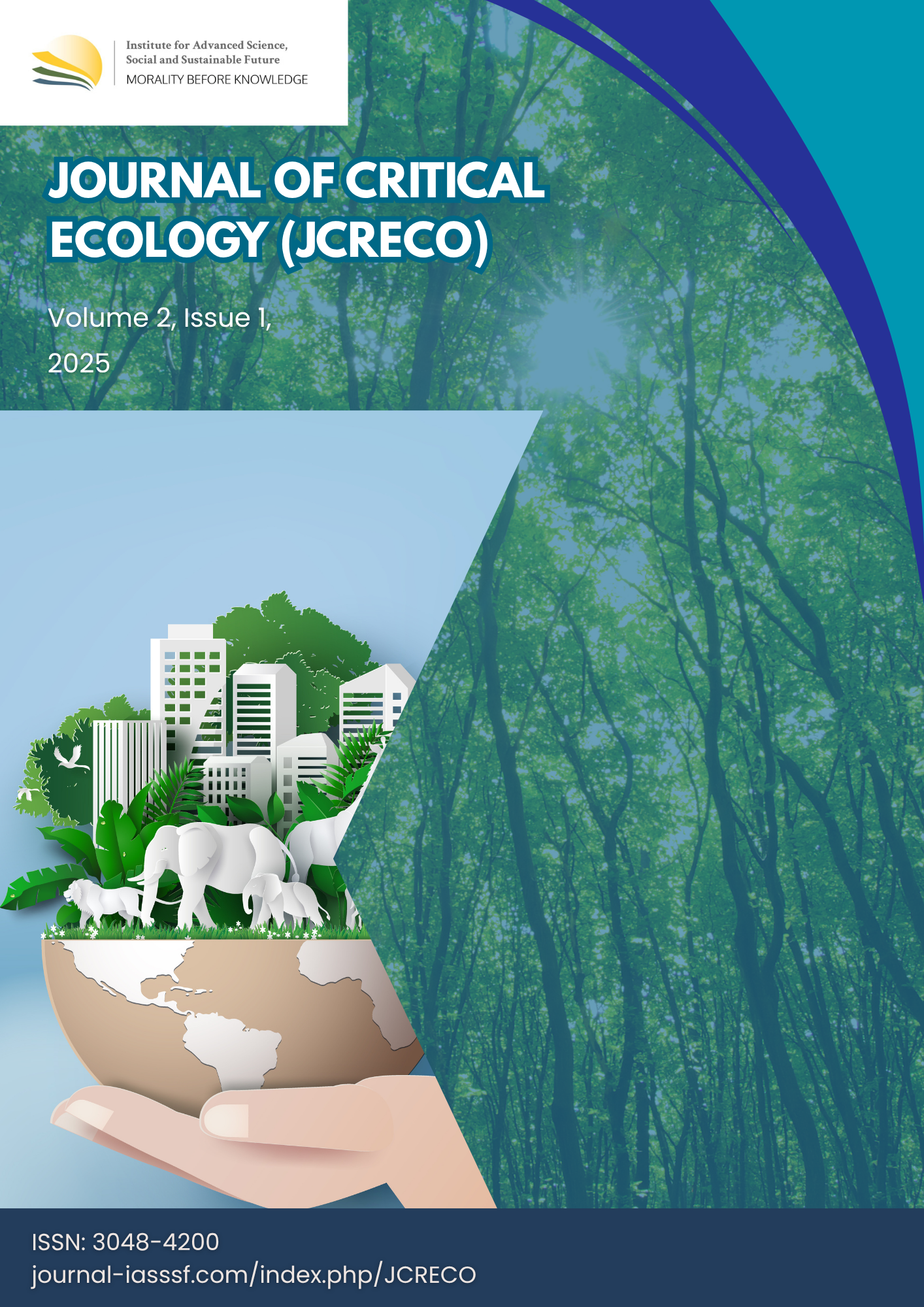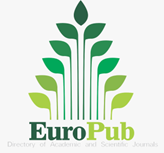Analysis of river water pollution control due to activities gold mining: Causes, impacts, and effective and sustainable control efforts
DOI:
https://doi.org/10.61511/jcreco.v2i1.1742Keywords:
aquatic ecosystems, environmental regulations, environmentally friendly technologies, gold mining, human health, illegal activities, mercury, pollution control, water pollution, water qualityAbstract
Background: This study examines river water pollution due to gold mining activities in Indonesia and its control efforts. This pollution is caused by the use of hazardous chemicals such as mercury and cyanide in the gold extraction process, as well as the disposal of mining waste without adequate treatment. The impacts of pollution include damage to aquatic ecosystems, decreased water quality, and threats to human health. Methods: The research methodology uses a qualitative approach with secondary data analysis from various sources such as journal articles, government reports, and case studies. Data are analyzed using triangulation techniques to ensure the validity and reliability of the information. Findings: The discussion shows that water pollution due to gold mining, especially illegal activities, has caused significant declines in water quality in various regions in Indonesia. The impacts of pollution include threats to human health, damage to aquatic ecosystems, decreased water quality, and disruption to the livelihoods of communities that depend on water resources. Conclusions: Emphasize the importance of pollution control through the application of environmentally friendly technologies, strict regulations, and public education. Recommendations for further research include further study of the long-term impacts of mercury pollution, development of more efficient waste treatment technologies, and exploration of alternative livelihoods for communities around mining areas. Novelty/Originality of This Study: This study lies in its comprehensive analysis of river water pollution from gold mining in Indonesia, integrating environmental, health, and socio-economic perspectives to propose sustainable pollution control strategies and alternative livelihood solutions.
References
Alwan, A. (2021). Impact of Gold Mining on the Environment in Kulon Progo. Journal of Environment and Development , Yogyakarta: Gadjah Mada University.
Antara News. (2022). Water and Land Pollution Due to Illegal Gold Mining Waste in Central Kalimantan.
Appleton, J.D., et al. (2019). Environmental risk mapping of mercury contamination from gold mining in the Madre de Dios region, Peru. Science of the Total Environment .
APHA. (2017). Standard Methods for the Examination of Water and Wastewater . Washington, DC: American Public Health Association.
Ayuningtyas. (2009). Basic Theory of pH. University of North Sumatra.
Banunaek, M. (2016). Mercury Pollution Due to Artisanal Gold Mining. Journal of Natural Resources and Environment , Jakarta: Research Institute of University of Indonesia.
Begon, M., Harper, J. L., & Townsend, C. R. (1996). Ecology: Individuals, Populations and Communities . Oxford: Blackwell Science.
Budianto & Arifin. (2022). Impact of Illegal Mining in the Kapuas River. Journal of Environmental Science , 14(2), pp. 45-57.
Canadian Environmental Assessment Agency. (2019). Environmental Impact of Mining Activities in Canada: A Review . Ottawa: Government of Canada.
Chen, Y., Zhang, Y., & Wang, J. (2021). IoT-based Water Quality Monitoring System for Smart Cities: A Review and Future Directions. Censorship , 21(3), 1045.
Correa-Marquez, M.A., & Santos-Lima, M. (2021). Nanomaterials for Water Remediation: A Review of Recent Advances. ACS Sustainable Chemistry & Engineering , 9(3), 1234-1245.
Correa-Marquez, J., & Santos-Lima, R. (2021). Nanobioremediation Techniques for Cyanide and Heavy Metal Removal in Gold Mining Watersheds. ACS Sustainable Chemistry & Engineering .
Dallinger, R., & Rainbow, P. S. (1993). Ecotoxicology of Metals in Aquatic Systems . New York: Springer.
Duran, A., & de Oliveira, A. (2019). Impact of Heavy Metals on Aquatic Organisms. Environmental Science & Technology , 53(12), 7345-7353.
Ecobhinnekamuhammadiyah.org. (2023). Gold Mining Waste Causes Water Pollution in Banyuwangi.
E.P.A. (2019). National Pollutant Discharge Elimination System . Washington, DC: US Environmental Protection Agency.
Fearnside, P. M. (2016). Environmental Impacts of Gold Mining in the Amazon. Journal of Cleaner Production , 135(1), 125-135.
Gani, A., et al. (2017). The Impact of Gold Mining on the Environment and Human Health. Environmental Monitoring and Assessment , 189(10), 1-12.
Gonzalez, M.J., et al. (2020). Health Risks from Mercury Exposure in Fish Consumption: A Review of Current Knowledge. Environmental Research , 182, 109097.
Hadi, S., et al. (2018). Continuous Water Quality Monitoring Using Multi-Parameter Sonde: A Case Study in River X. Journal of Water Quality , 23(4), 567-578.
Hach Company. (2010). Water Analysis Handbook . Loveland: Hach Company.
Heriamariaty, H. (2020). Efforts to Prevent and Overcome Water Pollution Due to Illegal Gold Mining in the Kahayan River Basin. Journal of Environmental Law , 12(1), pp. XX-XX.
Hilson, G., & McQuilken, J. (2016). Four Decades of Support for Artisanal and Small-Scale Mining in Sub-Saharan Africa: A Review of the Literature. The Extractive Industries and Society , 3(2), 203-228.
Hilson, G., & McQuilken, J. (2016). Regulatory Frameworks for Sustainable Mining in Developing Countries: A Review of the Literature and Recommendations for Future Research and Policy Development.
Hidayat et al., (2014). Impact of Illegal Mining on the Environment. Journal of Environment and Sustainable Development .
Hidayah, N. (2016). Environmental Impact of Gold Mining Activities. Journal of Environmental Science .
Junaidi, A., et al. (2020). GIS and Remote Sensing Applications for Water Quality Monitoring: A Review. Environmental Monitoring and Assessment , 192(9), 1-15.
Jiménez, B.E., et al. (2017). Low-cost technologies for water treatment in gold mining regions. Water Research .
Kurniawan & Santoso. (2023). Impact of Cyanide Use in Sembakung River. Journal of Natural Resources and Environment .
Kurniawan, F., Cahyadi, TA, Ernawati, R., Bargawa, WS, & Amri, NA (2021). Utilization of Natural Zeolite as a Filter Media in Tailing Wastewater Treatment from Gold Mining Activities: A Case Study in Indonesia.
Kurniawan, F., Cahyadi, TA, Ernawati, R., Bargawa, WS, & Amri, NA (2022). Overview of Tailings Waste Management Methods Due to Gold Mining Activities. In: Proceedings of the National Seminar "40 Years of Pandu Berbakti" .
Lestari et al., (2020). Impact of Cyanide on Aquatic Ecosystems. Journal of Ecology and Environment .
Mardiana, R. (2021). Mercury Pollution in the Citarum River. Journal of Environmental Health .
Mendrofa, AP, et al. (2021). Phytoremediation of Amalgamation Waste from Gold Ore Purification of Community Mining in Monterado District. Journal of Environmental Engineering .
Mongabay. (2022). Cyanide Pollution in the Anahoni River Due to Gold Mining Activities.
Mongabay. (2024). Potential for Water Pollution in Trenggalek If the Mine Operates.
Muhammad, A., & Aswadi. (2022). Mercury Pollution Control Strategy from Community Gold Mining in Poboya River. Journal of Natural Resources and Environmental Management , 9(1), pp. XX-XX.
Odum, E. P. (1997). Fundamentals of Ecology . Philadelphia: Saunders.
Pohan, D., et al. (2016). River Water Quality Assessment Using Pollution Index. Journal of Water Resources .
Pérez-Reynosa, E., & Rodriguez-Leiva, J. (2018). Phytoremediation: An Overview of Current Applications and Future Perspectives in Environmental Science & Technology .
Pérez-Reynosa, M., & Rodriguez-Leiva, E. (2018). Phytoremediation Strategies for Heavy Metal Removal in Rivers Impacted by Gold Mining Activities. Environmental Science & Technology .
Prasetyo et al., (2023). Tailings Waste in the Musi River.
Ratnaningsih et al., (2019). Mercury Pollution in the Batanghari River.
Rissamasu et al., (2010). The Effect of Hazardous Chemicals in Gold Mining.
Sánchez-Segura, C., et al. (2020). Innovative Technologies for the Treatment of Mercury-Contaminated Effluents from Artisanal and Small-Scale Gold Mining. Journal of Environmental Management .
Saleng, AB (2018). Environmental impacts of coal mining excavations on public health: Case Study in North Sangatta District, East Kutai Regency. Journal of the Environment .
Sari & Rahman. (2022). Tailings Waste in the Barito River.
Setiawan, A., et al. (2019). Biomonitoring of Aquatic Ecosystems: Methods and Applications in Water Quality Assessment. Environmental Science & Technology .
Setiabudi, S. (2005). Analysis of Environmental Damage Due to Mining.
Sliuzas, R., & Kemp, R. (2018). Community-based environmental monitoring in small-scale gold mining. Journal of Environmental Management .
Sukirno, M. (2020). Water contaminated by cyanide waste: Case Study of the Ciliwung River. Journal of Law and Environment .
Soediro & Santoso. (2017). Impact of Water Pollution Due to Illegal Gold Mining. Journal of Environmental Technology
Widodo, T., et al. (2017). Gold Mining Industry Waste Processing Method. Journal of Environmental Engineering .
Published
Issue
Section
Citation Check
License
Copyright (c) 2025 Melliza Pretty Putri Utami

This work is licensed under a Creative Commons Attribution 4.0 International License.















